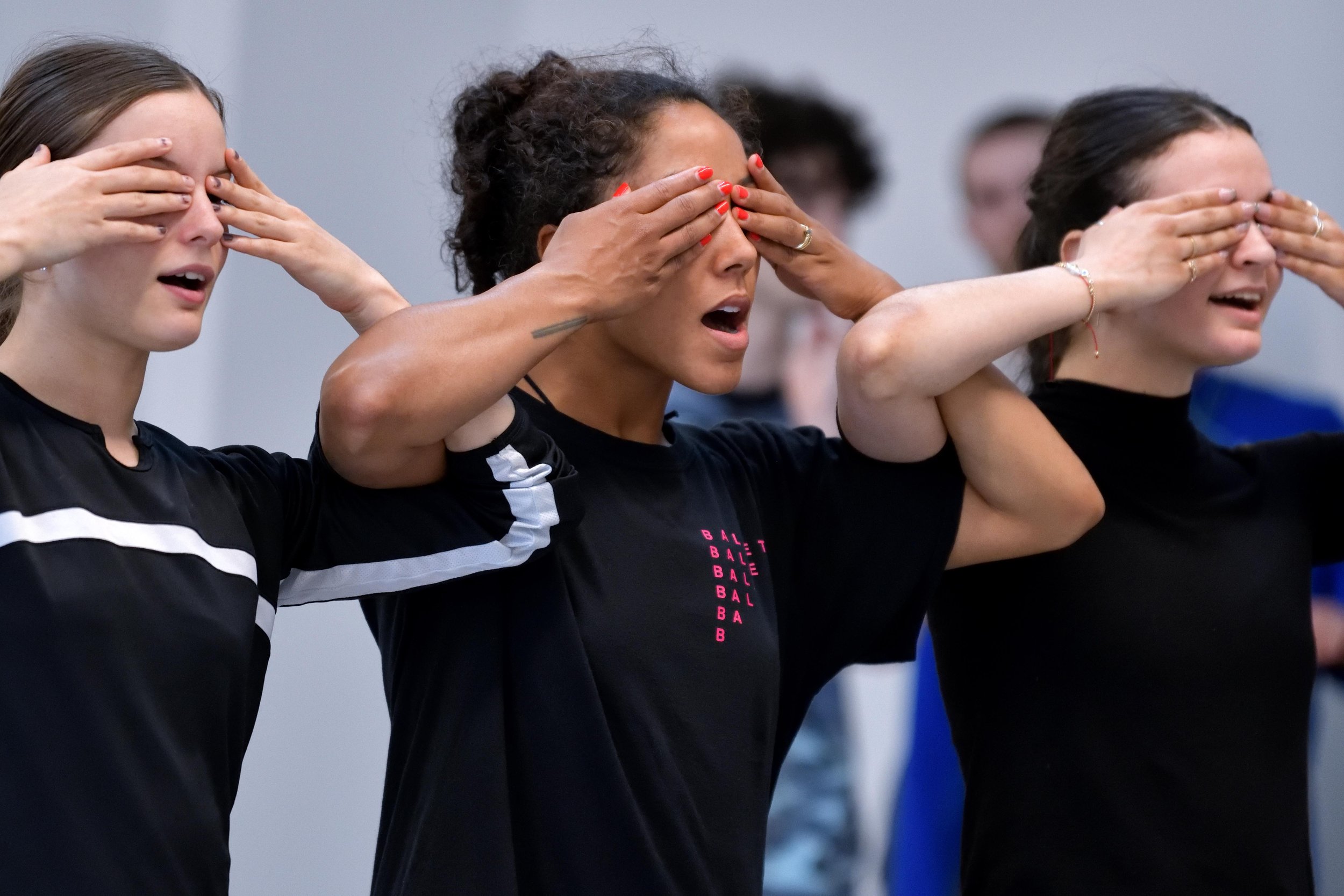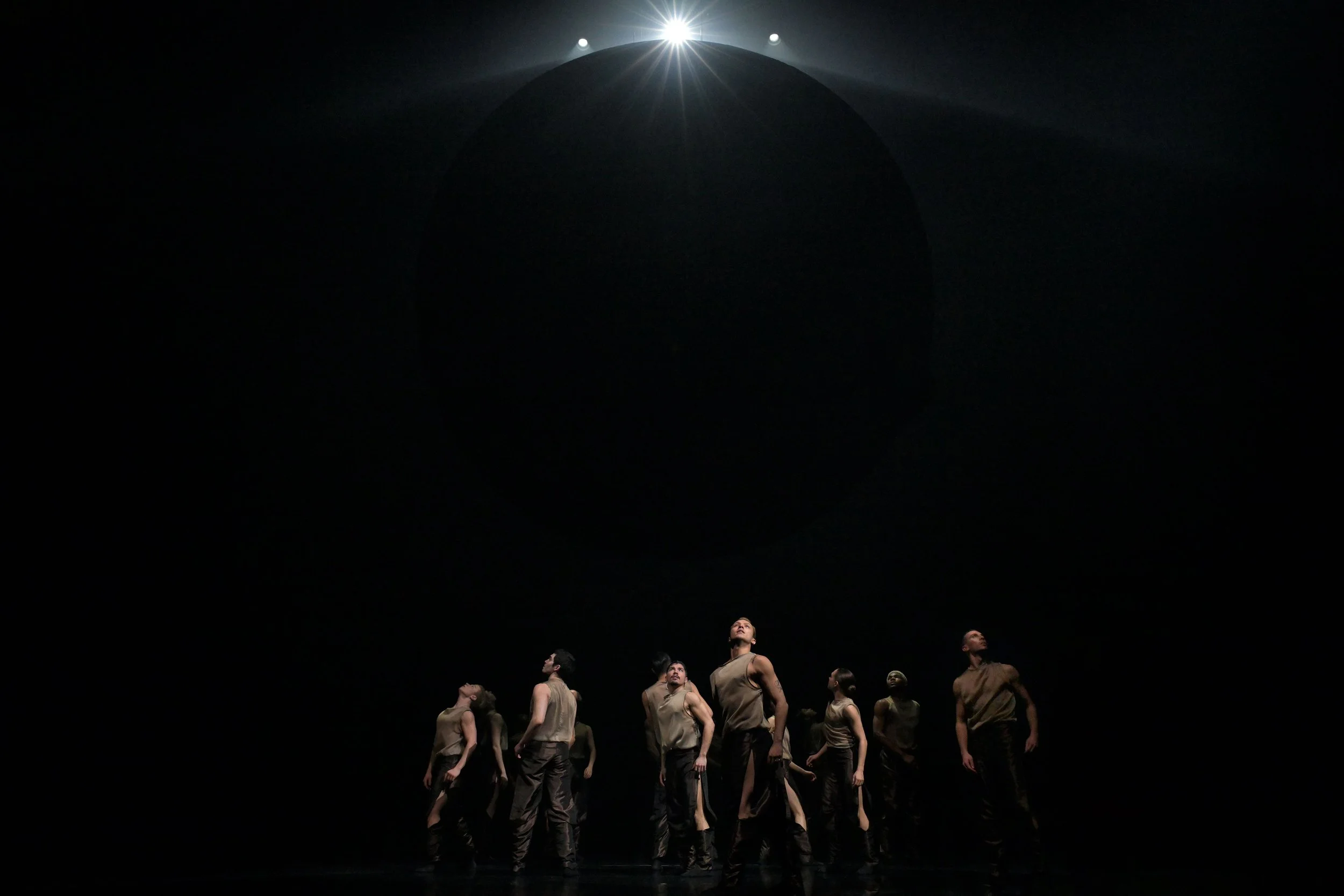Stir Q&A: Israel's Roy Assaf lets dance speak profoundly for itself, at Ballet BC's WAVE/S double bill
“For many years now I have been, with great difficulty, trying to answer the questions of journalists about my work”
Ballet BC dancers rehearse Roy Assaf’s untitled new commission. Photo by Michael Slobodian
Ballet BC presents WAVE/S on May 11 to 13 at the Queen Elizabeth Theatre
ISRAELI CHOREOGRAPHER Roy Assaf is a man of few words—at least when it comes to his intricate, deeply human dance works. Even in his program notes, he prefers not to share too many details with the audience, letting the dance speak profoundly for itself.
In demand at some of the world’s leading dance companies, Assaf is here preparing to present his first creation for Ballet BC—although audiences here got their first, intriguing taste of his work in The Hill at the Chutzpah! Festival a few years back.
Assaf has been dancing since his childhood in the rural community of Sde Moshe, in southern Israel, going on to work with Israeli choreographer Emanuel Gat. The artist has now created works for Batsheva Dance Company, Noord Nederlandse Dans, the Royal Swedish Ballet, Benjamin Millipied’s L.A. Dance Project, and many more.
Stir caught up with Assaf before the much-anticipated premiere here, set to join a new commission by Sweden’s Johan Inger, on the WAVE/S double bill this week.
We asked him about his life and art—knowing the new creation here will stay a mystery till opening night. And, in a gesture that says everything about Assaf’s sense of invention and humour, he ended up asking us something too.
Stir: We know you like to let your creations speak for themselves. If you were to tell us one thing about this new piece for Ballet BC, what would it be?
Assaf: Ah... Just 'ah.'
Stir: You got your start in dance young—we’ve read stories about your tap dance “recitals” on your balcony—but you have had little formal training. What has been the biggest benefit of that?
Assaf: I would prefer not to label the benefits or disadvantages of not training from an early age, and instead look at it as another fact of my journey in life, one for which I should be grateful (even though I can't always do that). The way I move, the way I watch others move, the way I hear music or do not hear it, the way certain compositions cause me discomfort, and the way I feel at ease with the expression of a certain person while they dance are characteristics that define me. Whether I should consider such characteristics to be benefits of having had little formal training... I really don't know.
Stir: At the Chutzpah! Festival a few years ago, we saw your company perform The Hill, inspired by the war-veterans’ experience. Is it true that your own drafted service in the Israel Defence Forces somehow fed your love of dance?
Assaf: My love for dance has existed for as long as I remember myself. My time in the army did not change that love in any way that I can name. However, in those three years I accumulated experiences that found their way into my works, perhaps most obviously and literally in The Hill.
Stir: You’ve choreographed for Batsheva Dance, but can you describe what Israel’s dance scene has been like for you outside those bigger companies and whether that’s led to more diversity of voices?
Assaf: Israel's dance scene is one of constant motion. There is an abundance of activity emerging from the people who play different roles in the dance community—dancers, choreographers, academics and more— from mentoring programs to podcasts to festivals to residencies... It's a busy scene.
Roy Assaf works with Ballet BC dancers in the studio. Photo by Michael Slobodian
Stir: What are your impressions of working with Ballet BC in Vancouver for the first time—the strengths and the surprises?
Assaf: Ballet BC is populated by people who love the art form and understand what it takes to make a dance. That fact lays the foundation for everything else. Trust is felt in the studio, in the office, and in the corridors. I am working with people who adapt to the needs of the process in real time, who are willing to go outside their comfort zone in order to allow me to take the creative risks I need, and it is not taken for granted.
Assaf: For many years now I have been, with great difficulty, trying to answer the questions of journalists about my work. In a sincere spirit of play and with a sense of humour, I thought it might be nice to flip the game for once, and would like to propose an answer to which you are invited to invent a question:
Take words, take tables, take books, fables, take a body, take a hand, take even a finger, take this and that, take yesterday, take the sea, take what will never come to be. Take this and that for free. Take David. Take Goliath. Take the front line. Take a diagonal string and a kite to Palestine.
Stir: How about this: What’s the key to unlocking peace in the Middle East?















